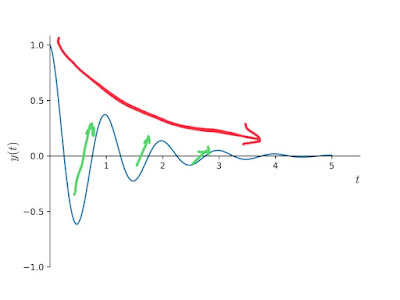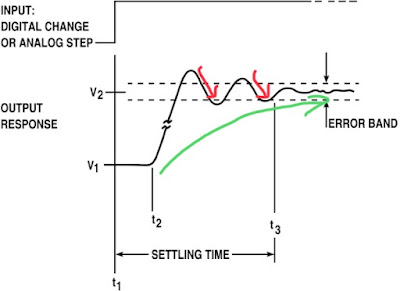Backgrounder on this effect in dynamic systems …Many systems exhibit oscillatory behavior when they are disturbed from their position of static equilibrium. A mass suspended from a spring, for example, might, if pulled and released, bounce up and down. On each bounce, the system tends to return to its equilibrium position, but overshoots it.So you can be trying to damp down a system but as the system overall responds negatively (red line) there can be short periods where the system is responding positively (green lines)….If you only sampled derivatives at the times where the green lines are you might think that your damping function wasn’t working…Same thing can happen oppositely in amplification:Anyway you have to be mindful in your time domain analysis…Then you have the unqualified Art
Topics:
Mike Norman considers the following as important:
This could be interesting, too:
Robert Vienneau writes Austrian Capital Theory And Triple-Switching In The Corn-Tractor Model
Mike Norman writes The Accursed Tariffs — NeilW
Mike Norman writes IRS has agreed to share migrants’ tax information with ICE
Mike Norman writes Trump’s “Liberation Day”: Another PR Gag, or Global Reorientation Turning Point? — Simplicius
Backgrounder on this effect in dynamic systems …
Many systems exhibit oscillatory behavior when they are disturbed from their position of static equilibrium. A mass suspended from a spring, for example, might, if pulled and released, bounce up and down. On each bounce, the system tends to return to its equilibrium position, but overshoots it.
So you can be trying to damp down a system but as the system overall responds negatively (red line) there can be short periods where the system is responding positively (green lines)….
If you only sampled derivatives at the times where the green lines are you might think that your damping function wasn’t working…
Same thing can happen oppositely in amplification:
Anyway you have to be mindful in your time domain analysis…
Then you have the unqualified Art Degree morons say “stability creates instability!” or some other paradoxical nut job statements and these people are in charge… go figure…


